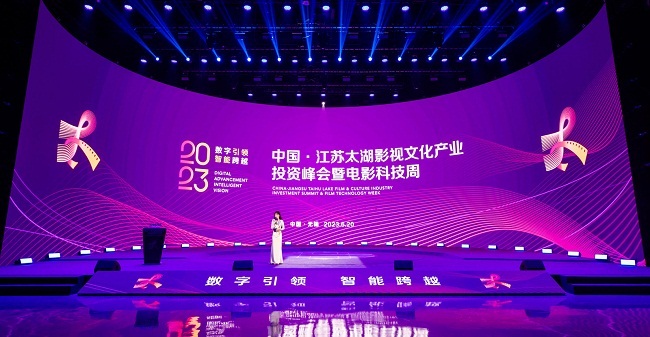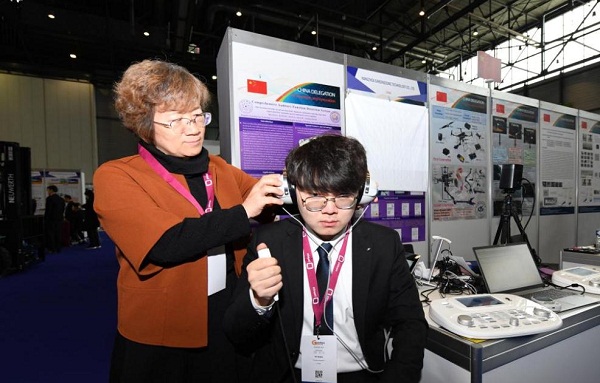Jiangsu combines green awareness, growth
- (China Daily)
- Updated: 2022-08-15
Jiangsu province has been realizing high-quality development as it has made remarkable strides in the green economy over the past decade, leading provincial officials said on Friday.
Since the 18th National Congress of the Communist Party of China in 2012, President Xi Jinping has visited Jiangsu three times and expressed hope that the province can strive to set an example for other provinces in reform and innovation, be a model promoter of high-quality development and shift from high-speed to high-quality development.
Wu Zhenglong, Jiangsu Party secretary, said that the province has followed Xi's ecological philosophy and strives for ecological priority and a green economy.
"While Jiangsu's GDP more than doubled in the past decade, the total amount of major pollutant emissions has continued to decline. Energy consumption and carbon emissions intensity per unit of GDP have decreased by 48.3 percent and 43.4 percent, respectively," Wu said.
"Now, finless porpoises have reappeared in the Jiangsu section of the Yangtze River and peach blossom jellyfish have returned to Taihu Lake. Blue skies, white clouds, green waters and mountains are within sight," Wu added.
More than 93.6 percent of the public feel satisfied with the environment in Jiangsu, he added.
According to the Jiangsu Development and Reform Commission, the average density of PM 2.5 particulate matter in the province decreased by 54.8 percent over the past decade, while riverbank stretches totaling 72.6 kilometers along the Yangtze had changed from factory-use lands to green lands with residential development.
Ji Ming, deputy director of the commission, said that Jiangsu has established a leadership mechanism and formed leading groups to realize the province's carbon peak and carbon neutrality goals.
"We will promote the work of pollution and carbon reductions through efforts such as establishing systems of carbon emission statistics, monitoring, evaluation and supervision," Ji said.
Jiangsu has specified the responsibilities of protecting the Yangtze while rolling out development plans for the Jiangsu section of the Yangtze River Economic Belt. It also published about 20 regulations and policies to protect and develop the Yangtze.
The GDP of areas along the Yangtze in 2021 accounted for 77 percent of the province's total, according to official statistics.
Investment in science and technology, newly emerging industries and high technology companies in the areas accounted for about 85 percent of the province's total.
Fan Xinfang, deputy director of the Jiangsu Housing and Construction Department, said that more than 6 million people in the province moved from dilapidated houses to newly built apartments in cities.
By the end of 2021, Jiangsu had also rebuilt or restored more than 10,000 residential communities that were constructed before 2000, which has benefited more than 10 million people.
The province had shut down 57,275 polluting enterprises and ordered 4,739 chemical companies that failed to meet safety and environmental protection standards to close over the past decade, according to Jiangsu's Department of Ecology and Environment.
The number of chemical industrial parks had fallen from 54 to 29 in Jiangsu over the period as it focuses more on green and low-carbon industries, the department said.
Parks and green land spaces in Jiangsu increased from 408 to 644 square kilometers over the past 10 years. The number of parks rose from 826 to 1,504, of which 96 percent are now open to the public free of charge.
Jiangsu's endeavors to promote a green economy and high-quality development have turned out to be fruitful. Its GDP in 2021 was comparable to that of South Korea, Wu said.
"Jiangsu's GDP increased from 5.37 trillion yuan ($796.9 billion) in 2012 to 11.64 trillion yuan in 2021. While Jiangsu accounts for 1.1 percent of the nation's land area and 6 percent of the population, its economy accounts for 10.2 percent of the country's total," Wu added.
Jiangsu's per capita GDP increased from 66,500 yuan in 2012 to 137,000 yuan in 2021, topping China's provincial-level regions for 13 consecutive years. In 2021, when it reached $21,241, it surpassed the World Bank's income threshold for high-income countries.
Contact Us
Tel: +86-510-81178089
E-mail: bhwxk8@126.com
Sponsored by Binhu District Government Copyright© China Daily.
All Rights Reserved.





